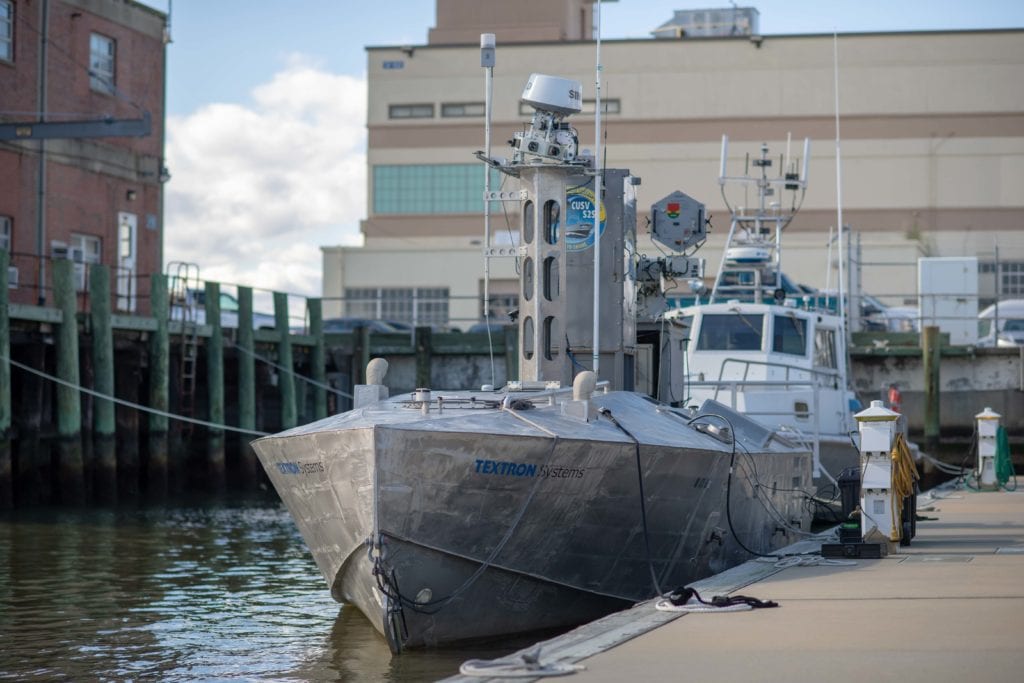
ARLINGTON, Va. — The Navy has ordered another Unmanned Influence Sweep System (UISS) unmanned surface vehicle (USV) from Textron, the Defense Department announced.
The Naval Sea Systems Command awarded Textron Systems a $12.9 million contract for one low-rate initial production (LRIP) UISS, the Navy’s first USV program of record. The UISS was approved for LRIP in February 2020, after which the Navy placed an order for three systems. This latest award brings the LRIP lot to four systems.
The UISS is a stand-off, semi-autonomous system designed with the capability to counter acoustic and/or magnetic mines. It includes a magnetic cable that tows a modified Mk104 sound source towed by a Mine Countermeasures USV (MCM USV). The Mk104 uses cavitation to create sound while the cable establishes a magnetic field to detonate mines. Developmental test and operational assessment was completed in November 2019. The UISS is to be deployed in the mine countermeasures package for LCSs and also on vessels of opportunity.
The MCM USV is a development of Textron’s Common USV (CUSV), a multi-mission vehicle capable of carrying multiple payloads including side-scan sonar, mine neutralization, non-lethal weapons, and intelligence, surveillance and reconnaissance sensors.
- SECNAV Advocates Increased Legal Immigration to Increase Shipbuilder Workforce - April 23, 2024
- Insitu Going Strong at 30, Focusing on Maritime Operations - April 8, 2024
- Navy Awards Boeing Additional Funds for MQ-25 Drones for Testing - April 3, 2024






